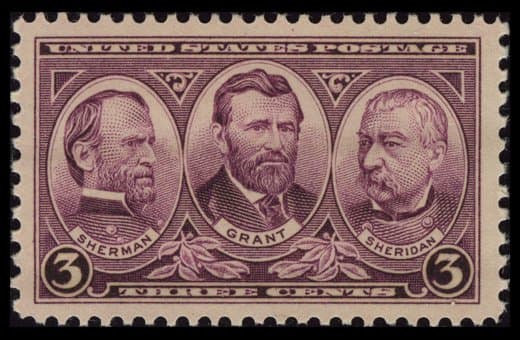
The smaller size was adopted in preparation for future issues that could be used as coils or booklets and sold in vending machines. On March 26, 1947, the SkyMaster design appeared on a new, smaller airmail stamp. US #C33 – first SkyMaster stamp issued at the smaller size The Post Office also reported an increase of 19 million airmail letters sent in the first two weeks of October compared to the first two weeks of September, which they credited to the new lower rate. The SkyMaster issue was soon known as the “Nickel Air Mail Stamp” and was promoted during National Air Mail Week. The stamp and a matching Airmail Stationery Envelope were issued on September 25, but the rate didn’t take effect until October 1. This was a savings of up to 90¢ per ounce. This included airmail sent to and from US territories including Hawaii, Guam, and the Canal Zone. The first SkyMaster stamp was issued in 1946 to pay the reduced rate of domestic airmail from 8¢ per ounce to 5¢ per ounce. US #C32 – first SkyMaster stamp, issued in the larger format The SkyMaster was also widely used in commercial aviation and to deliver airmail. The aircraft quickly played a critical role in the Allied war effort and the Berlin Airlift of 1948-49. The DC-4 SkyMaster made its maiden flight on February 14, 1942. Only a few more coil stamps would be issued over the next 30 years, but the DC-4 SkyMaster would appear on more than a dozen postal items. The first US Airmail coil stamp was issued on January 15, 1948, in Washington, DC. Postal administrations charged a premium for airmail service, so special airmail stamps were issued to cover the higher rate.US #C37 – America’s first Airmail coil stamp 16, 1946, during which time many countries around the world followed suit as transporting mail by air gained popularity. Post office flights were divided into two types in 1928-”airmail services,” which provided a faster service than regular airmail, and “air stage services,” which carried all its dispatches to a point that was difficult to reach by other means, adds the CAS article.Ĭanada’s airmail stamps were issued between Sept. The stamp’s two winged figures – symbolic of flight – are set against a globe representing the northern half of the western hemisphere, on which is an outline of the map of Canada.

21, 1928, in conjunction with the regular sovereign and pictorial issue of 1928.

The inaugural airmail stamp was issued on Sept.

The Post Office did not begin providing cachets until 1928.” No official cachets were produced for these early services, although mail prepared by dealers with unofficial cachets can be found. “No extra charge was made for initial air mail services. This was soon followed by additional services, mainly to points that were cut off during winter,” reads an article published on the CAS website. “It began with experimental service between Montreal and Rimouski, designed to connect with trans-Atlantic steamers, and to speed up mail to and from Europe. The Post Office Department began budgeting for airmail services in 1927, according to the Canadian Aerophilatelic Society (CAS). “It was released at a time of intensive activity in Canadian airmail development when service was reaching from the Atlantic to the Pacific, and into the far northern regions.” INAUGURAL AIRMAIL STAMP Printed by the Canadian Bank Note Co., the stamp was “symbolic and pictorial in character,” according to the 1964 book, Canada’s Postage Stamps, by Douglas and Mary Patrick. On today’s date in 1928, Canada’s Post Office Department (now Canada Post) introduced the country’s first airmail stamp, a five-cent denomination (Scott #C1) showing two winged figures alongside a globe.


 0 kommentar(er)
0 kommentar(er)
